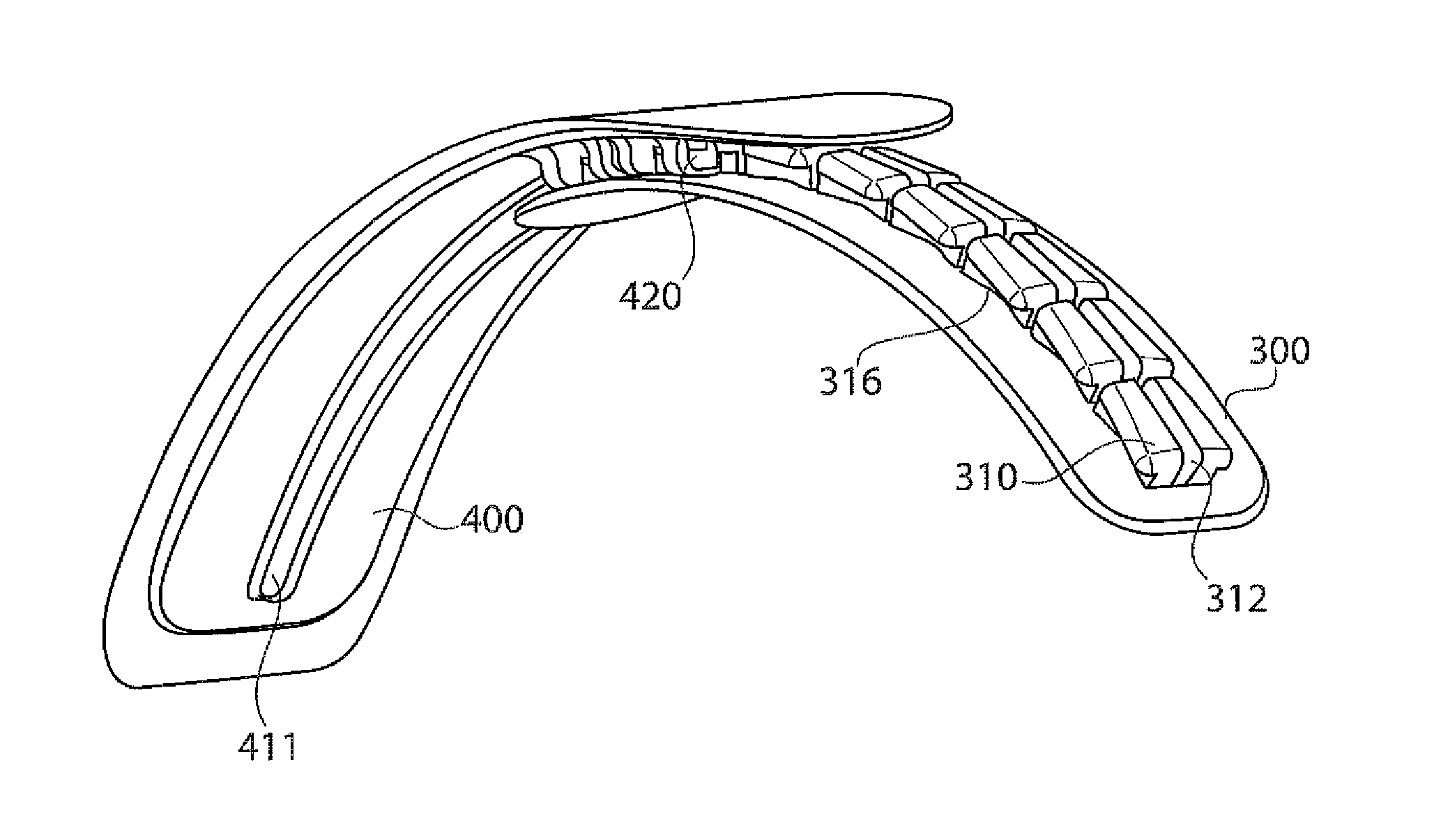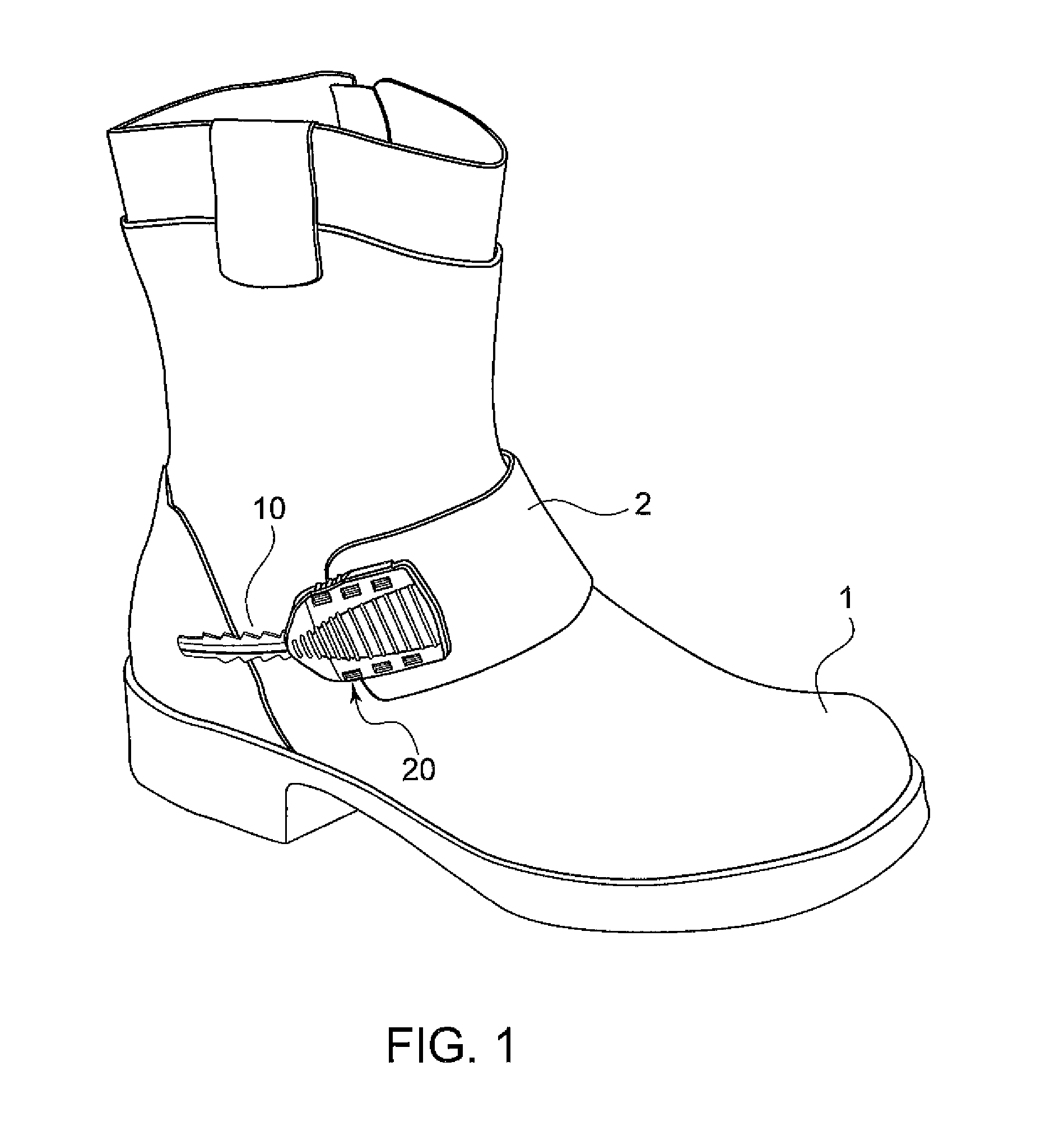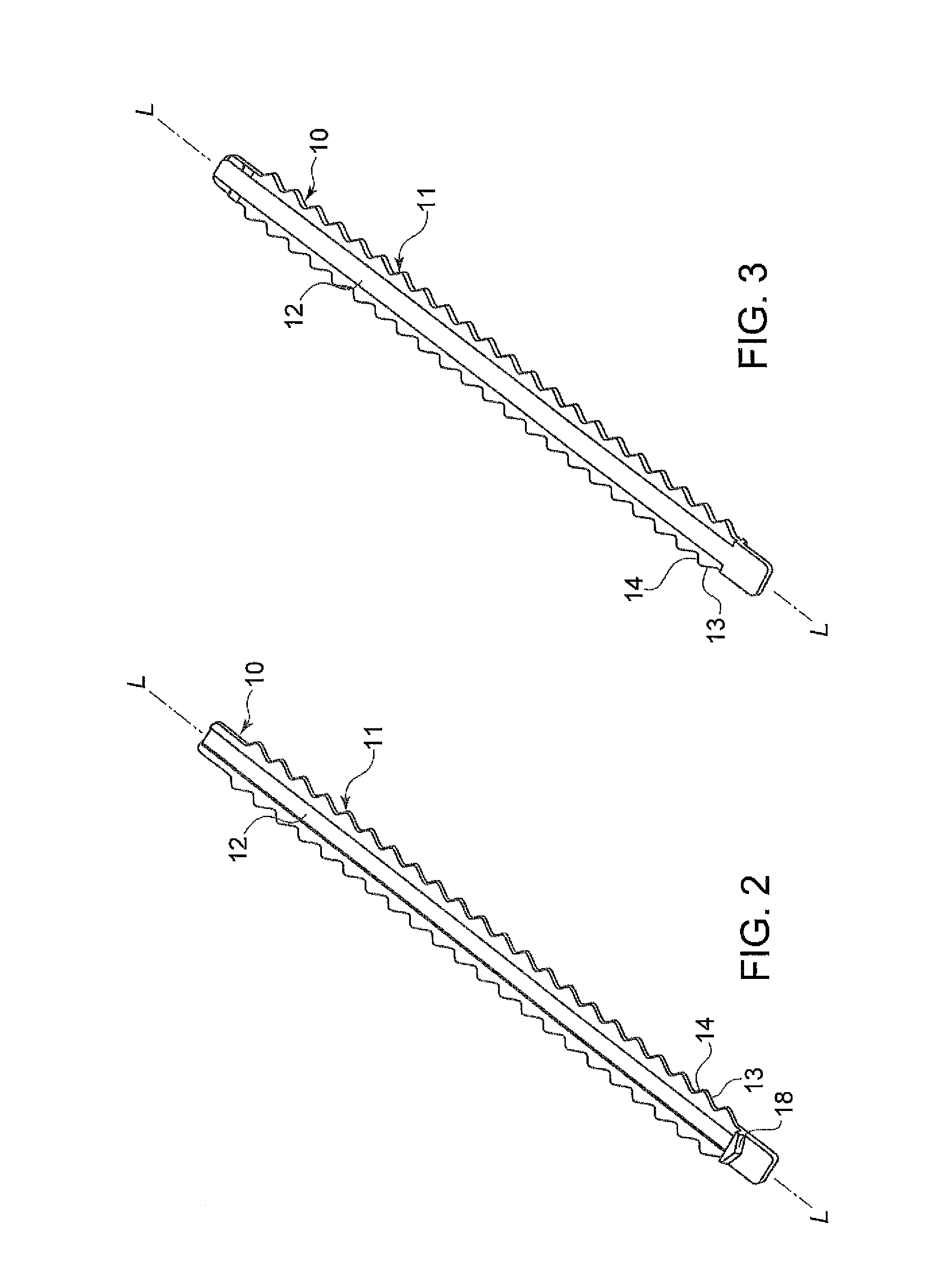Ratchet adjustment system
a ratchet and adjustment technology, applied in the field of ratchet adjustment system, can solve the problems of reducing the adhesiveness of parts, cumbersome adjustment of the ratchet with only one hand, etc., and achieve the effect of convenient adjustment, easy slide and convenient adjustmen
- Summary
- Abstract
- Description
- Claims
- Application Information
AI Technical Summary
Benefits of technology
Problems solved by technology
Method used
Image
Examples
Embodiment Construction
[0042]Referring now in detail to the drawings, FIG. 1 shows a view of the view of the system according to the invention installed on a boot 1. The system comprises an elongated adjustment strip 10 and a locking mechanism generally designated as 20 attached to a strap 2 of boot 1. Locking mechanism 20 slides along adjustment strip 10 to tighten or loosen boot 1 as desired. The structure and function of the system is explained below with reference to the remaining Figures.
[0043]FIGS. 2 and 3 show the elongated adjustment strip 10 according to one embodiment of the invention. The strip has a set of teeth 11 extending along each of the two longitudinal sides of strip 10. A central portion 12 of strip 10 is recessed on the top surface as shown in FIG. 2 and protrudes from the bottom surface as shown in FIG. 3. This way, the central portion 12 can be attached to an article along the bottom surface of strip 10 while leaving teeth 11 free. Each one of teeth 11 has a forward side 13 facing a...
PUM
 Login to View More
Login to View More Abstract
Description
Claims
Application Information
 Login to View More
Login to View More - R&D
- Intellectual Property
- Life Sciences
- Materials
- Tech Scout
- Unparalleled Data Quality
- Higher Quality Content
- 60% Fewer Hallucinations
Browse by: Latest US Patents, China's latest patents, Technical Efficacy Thesaurus, Application Domain, Technology Topic, Popular Technical Reports.
© 2025 PatSnap. All rights reserved.Legal|Privacy policy|Modern Slavery Act Transparency Statement|Sitemap|About US| Contact US: help@patsnap.com



